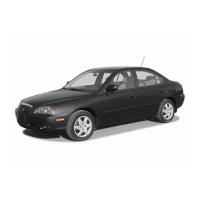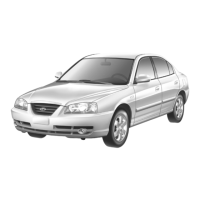
Do you have a question about the Hyundai Elantra GT 2018 and is the answer not in the manual?
| Brand | Hyundai |
|---|---|
| Model | Elantra GT 2018 |
| Category | Automobile |
| Language | English |
Provides guidance on navigating the owner's manual, including table of contents and index.
Explains safety messages on vehicle labels and in the manual to avoid risks.
Details unleaded fuel requirements and cautions against methanol-blended fuels.
Identifies and illustrates exterior features like hood, windows, lamps, and wheels.
Locates and identifies interior controls and features such as door handles and switches.
Details components of the instrument panel, including gauges, indicators, and controls.
Identifies key components within the engine compartment for maintenance checks.
Covers essential safety advice including seat belt use, child restraint, and driver distraction.
Explains seat adjustment, seat belt usage, and safety precautions for occupants.
Provides guidance on selecting, installing, and using child restraint systems safely.
Details the operation, safety precautions, and components of the Advanced Supplemental Air Bag System.
Covers remote key and smart key functions for unlocking and starting the vehicle.
Explains the functions of the tilt/telescope steering, horn, and heated steering wheel.
Details operation of exterior lights, including DRL, headlamps, and turn signals.
Describes manual and automatic climate control systems, modes, and operation.
Covers center console, glove box, and sunglass holder usage and safety.
Outlines essential checks before entering and starting the vehicle for safety.
Explains the function and positions of the key ignition switch and start/stop button.
Provides procedures for starting the engine with manual and automatic transmissions.
Details power brakes, parking brake, ABS, ESC, VSM, and Auto Hold system.
Explains Smart Cruise Control functions, settings, limitations, and operation.
Instructions on using the hazard warning flasher for signaling emergencies.
Procedures for engine stalling while driving or at a crossroads.
Step-by-step guide for jump starting a vehicle safely, including precautions.
Explains TPMS operation, indicator lights, and malfunction warnings.
Details on changing a tire, including using the jack, tools, and spare tire.
Guidance on checking engine oil level and replacing oil and filter.
Instructions for checking coolant level and recommended coolant types.
Procedure for checking and maintaining the brake/clutch fluid level.
Covers tire care, inflation, rotation, replacement, and terminology.
Explains fuse types, locations, and procedures for replacement in instrument panel and engine.
Guidance on washing, waxing, and cleaning exterior surfaces to protect the finish.
Provides key dimensions, engine displacement, bore, stroke, and cylinder count.
Lists bulb types and wattages for front and rear exterior and interior lighting.
Details tire sizes, inflation pressures, lug nut torque, and tire care recommendations.
Lists recommended engine oil, transmission fluid, coolant, and other fluid specifications.
Explains VIN location and the vehicle certification label information.
Guides on how to report vehicle safety defects to NHTSA and Hyundai.












